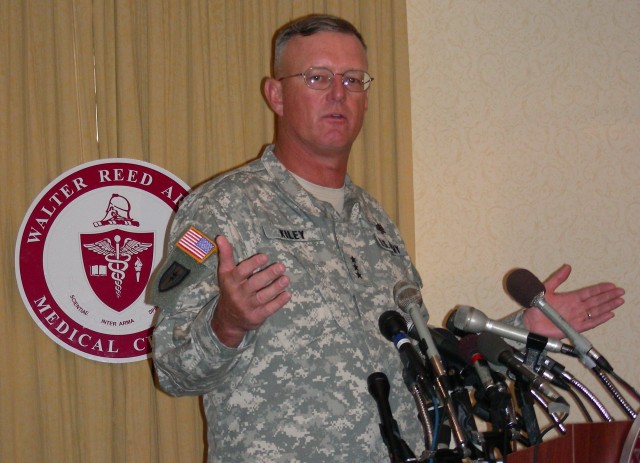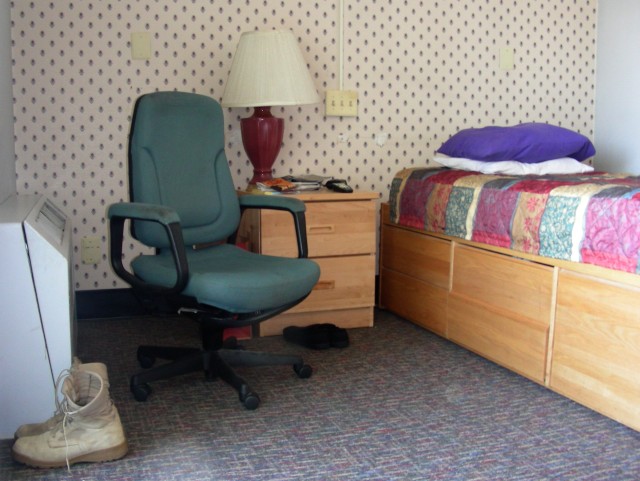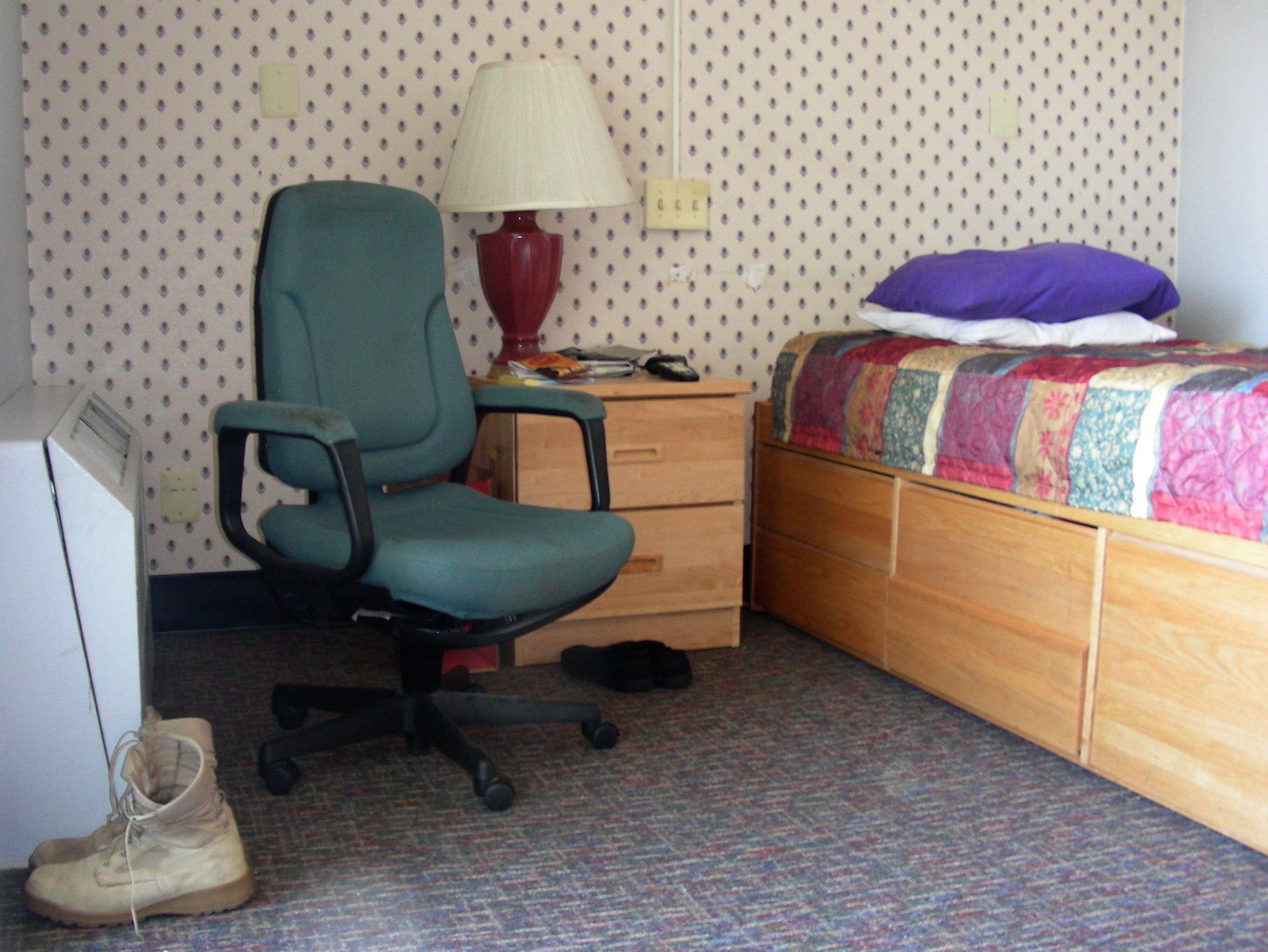WASHINGTON (Army News Service, Feb. 23, 2007) - The Army surgeon general's staff is putting a "full-court press" on fixing the backed-up repairs needed at Walter Reed Army Medical Center's outpatient Building 18, the service's top medical officer said here yesterday.
Flanked by a host of staff officers and facing a small army of media, Army Lt. Gen. (Dr.) Kevin C. Kiley said most of the reported maintenance issues that brought the center into the national spotlight will be fixed by the end of this week.
Kiley also said a major renovation is planned for the building - a former hotel used to house outpatients and their families - that will overhaul it entirely, including its heating and air conditioning system and plumbing. Because the Soldiers there will have to move, the timing has not been set. Planners want to cause minimal disruption to the Soldiers, Kiley said.
Officials allowed media to tour the building, as well as another building that houses outpatient Soldiers, the Mologne house. Soldiers milled around Building 18 shooting pool and playing video games as reporters and photographers flocked around them.
The halls throughout the 54-room building smelled of bleach and plaster. Contractors went about repairing plumbing and painting walls. Finished rooms were on display.
The same Soldier pictured in newspaper reports standing next to a moldy wall was now being photographed standing with the Army's surgeon general in a freshly cleaned and painted room.
Another Soldier, Spc. Ruben Villalpando, said he is happy he can get a warm shower now. For the past several months, his water has varied from extremely hot to cold, he said.
"Now it will be a lot better," he said. "You fix my shower and I'm good."
Within walking distance of the hospital's Georgia Avenue entrance, Building 18 was bought by the Army in 1989.
In 2005 the Army spent more than $260,000 replacing the carpet in all of the rooms and fixing up the lobby and game room. New mattresses and tables were placed in each room. The game room got a new pool table, games and a plasma television. Security cameras also were installed.
The rooms are apartment-style, with two bedrooms sharing a common kitchen area and bath. Each has a microwave and a small refrigerator.
There are 76 Soldiers living in the building. It can house 106.
Kiley said his staff also is looking into reported problems with the bureaucracy of the medical process and personnel system. He admitted that the outpatient process can, at times, be bureaucratic, and that it needs to be streamlined.
"We want to be responsive to their (patients') concerns, both medical and quality of life, and we're going to move out smartly on that," he said. "We worry when Soldiers think we are ignoring them. We want to correct that."
Kiley said officials are looking at adding more case managers. At one time, one case manager was responsible for 120 Soldiers, Kiley said. Now the ratio is about 1 to 30 Soldiers, and officials will look at lowering the ratio even further, he said.
Some of the problems are systemic across the Army and the Defense Department, Kiley acknowledged, but he said he would call on service officials, and Congress if needed, to fix the problems. Primarily, he said, he hopes to streamline the medical and physical board process that determines the administrative disposition of Soldiers' cases that is lengthy and bureaucratic.
Kiley said that, while there is no excuse for the problems cited in news reports, those problems are not indicative of the care all servicemembers and their families receive at the center.
The hospital has a staff of 4,200 and has treated more than 6,000 wounded Soldiers in the past five years. The population of outpatients at Walter Reed increased from pre-war levels of about 120 to a peak of more than 874 Soldiers in 2005.
Over the next few weeks, the hospital staff will review about 30 outstanding work orders, according to a Walter Reed news release. The hospital already has completed more than 200 maintenance projects in the past year, the release reported.
(Fred W. Baker III writes for the American Forces Press Service.)
Related Links:
Gates: Wounded Servicemembers Should Not Have to Battle Bureaucracy






Social Sharing